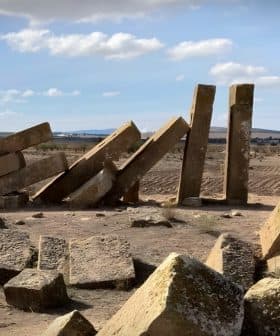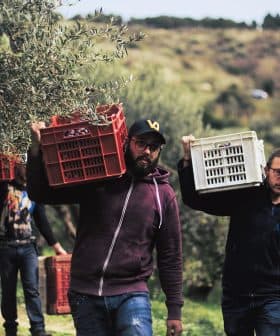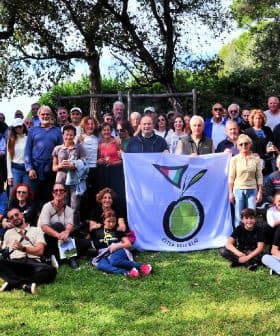Art Exhibition Reflects on Xylella's Devastating Impact
‘Xylella Studies,’ which documents the disruption caused by the bacterium to Puglia, will be on display until September 10th at the Sigismondo Castromediano Museum.
 Xylella Studies #8, Lecce, Puglia, Italy, 2021
Xylella Studies #8, Lecce, Puglia, Italy, 2021 The Sigismondo Castromediano Museum in Lecce is hosting the ‘Xylella Studies’ exhibition by Edward Burtynsky, focusing on the disruption caused by Xylella fastidiosa, in partnership with the Sylva Foundation until September 10th. Burtynsky, a renowned artist, was commissioned by the foundation to capture the effects of Xylella fastidiosa on the Apulian landscape, and his works are now displayed in close dialogue with the museum’s archaeological collection, highlighting the impact of the epidemic on the region.
The Sigismondo Castromediano Museum in Lecce, Puglia, will host the ‘Xylella Studies’ exhibition by the Canadian photographer and artist Edward Burtynsky, who has captured the disruption caused by Xylella fastidiosa in 12 large-format photographs and a video until September 10th.
The event is the result of a partnership with Sylva Foundation, a non-profit founded in 2021, aiming at the environmental regeneration of lands affected by Xylella fastidiosa through reforestation.
The setting of the exhibition of a contemporary artist like Burtynsky in this archaeological museum makes the representation of the Xylella fastidiosa epidemic even more dramatic.
Last year, Burtynsky was invited to a residence in Salento by the foundation and commissioned to translate the effects of the bacterium’s spread on the Apulian landscape into photos and videos. He was then selected to receive the 25th Pino Pascali prize, awarded each year to a contemporary artist.
“Focusing on the impetuous and negligent action of man on the planet, anthropocentric phenomena become for Burtynsky the fulcrum for redefining the spirituality of nature and the precarious balance between living beings,” said the commission of experts in the explanatory statement to the award.
See Also:Art Exhibition Raises Awareness of Growing Wildfire Risk, Funds ReforestationThe artist dedicated his 40-year career to documenting humanity’s effects on the planet, and his works can now be found in the collections of the most renowned museums in the world.
Among the most popular is the multidisciplinary body of work ‘Anthropocene Project,’ combining photography, film, virtual and augmented reality and scientific research.
“The setting of the exhibition of a contemporary artist like Burtynsky in this archaeological museum makes the representation of the Xylella fastidiosa epidemic even more dramatic, enhancing the understanding of the damages caused by this plague,” Luigi De Luca, the Sigismondo Castromediano Museum’s director, told Olive Oil Times.
The ‘Xylella Studies’ works are put in close dialogue with the archaeological collection of the museum, mingling with the artifacts located along the permanent itinerary, which is divided into five sections defined as cultural landscapes of the sea, the land, the sacred, the living and the dead.
At the same time, on the external perimeter of the museum, a selection of shots taken by the photographer and artist from Salento Daniele Coricciati during the days in which Burtynsky worked in the olive groves will be displayed throughout the exhibition.
“It is not just a matter of destroying millions of olive trees, and therefore a naturalistic as well as productive heritage, since the production of extra virgin olive oil is so pivotal in Puglia, but it is also about destroying a significant piece of the cultural identity of our land,” De Luca said.
“Indeed, the set-up in the museum, alongside items that tell us how ancient and rooted the tradition and culture of olive oil are in our land and the entire Mediterranean basin, helps us reflect even deeper on the plague that our land is experiencing,” he added.
As of today, 10 years since the Xylella outbreak associated with the drying up of olive trees was discovered, more than 8,000 hectares of territory, equal to 40 percent of the region, is affected at different levels by the epidemic and containment protocols.
Still, in the last two years, the infective capacity of the bacteria decelerated, experts told Olive Oil Times in June.
Share this article









